How Uncommon Schools Is Guiding Alumni Through College Graduation: GPA, SAT Scores & a ‘Dirty Little Secret’
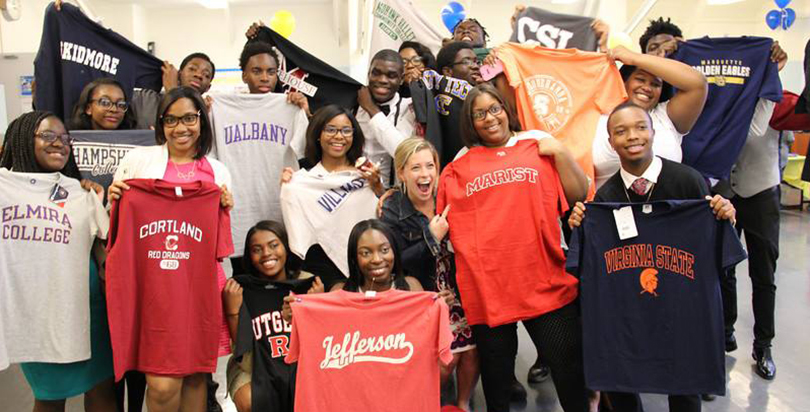
This is one chapter in an ongoing multimedia series by Richard Whitmire called The Alumni, which focuses on the efforts being made by America’s top charter networks in guiding alumni to — and through — college. Read all our school profiles here, and be sure to visit The Alumni microsite to see other essays, videos, graphics, and profiles of the educators and students leading a college success revolution: TheAlumni.The74Million.org.
North Star holds a special place in charter school history. Norman Atkins and Jamey Verrilli launched the first North Star school in 1997. Verrilli was already teaching in Newark and Atkins moved there from New York City, leaving his job at the helm of the Robin Hood Foundation, a charity that seeks to mitigate the effects of poverty in the city. Starting a school, Atkins concluded, meant getting closer to the source of turning around the poverty dilemma.
And where better to start than long-beleaguered Newark?
Over the years, their schools have probably drawn more visits from would-be charter entrepreneurs than any charter network in America. North Star’s iconic morning “community circle,” a spirited all-school gathering involving African drums, call-and-response, and academic exercises, has popped up in various forms in charter schools across the country.
As one of the most famous charters in America — a country where a bachelor’s degree is the commonly cited indicator of success — North Star has only recently been able to calculate how many of its high school graduates go on to earn four-year degrees. The 142 students in North Star’s senior classes of 2004 to 2010 were the first to reach the six-year, post-graduation mark — the standard window of time used to measure how many successfully earned four-year college degrees.
The finding: exactly half.
To upper-income parents — those in the nation’s top quartile of earners — that may sound unimpressive. After all, 79 percent of their children earn college degrees at the six-year mark.
But let’s put that number in context: Only 9 percent of low-income, minority kids earn college degrees. From that perspective, 50 percent earning degrees is impressive. Is it worth the disruption to traditional schools? Arguably yes, at least in my view.
But there’s more to this college graduation story.
Uncommon Schools, of which North Star is part, is one of the larger high-performing charter management organizations that is leading the pack. Uncommon Schools are also the ones I wrote about in The Founders. Where networks such as Uncommon, KIPP, and Achievement First are headed, others will follow.
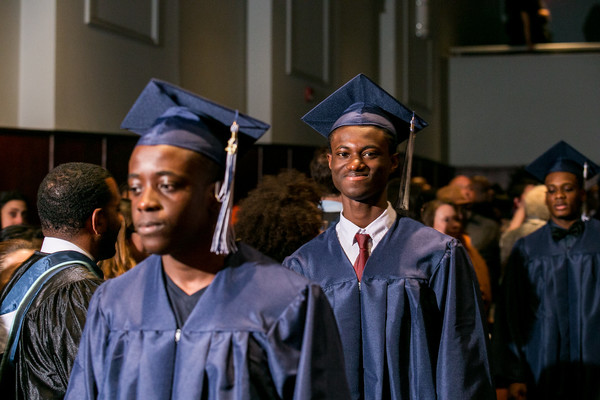
While North Star’s 50 percent success rate may seem notable, other data points need to be highlighted. Based on factors such as rising GPA and SAT scores, Uncommon predicts a rising college success rate. Of the 80 students in the class of 2013, for example, half graduated this past spring with a bachelor’s degree — four years after leaving high school — and 23 percent are still enrolled in a four-year college.
Here is where things get interesting.
There are currently seven Uncommon high schools, with three more planned within the next three years across the northeast region of the U.S. in which it operates. Assuming graduating classes of 200 per school, between 7,000 and 9,000 Uncommon students will be in college about eight years from now. And if their degree-earning rates rise dramatically from 50 percent, as the current on-track persistence rate indicates, this could be a game changer.
Uncommon is not the only high-performing charter network putting up these kinds of college graduation rates.
If the projected pattern continues, the civil rights and anti-poverty implications are significant. Even the many critics of charter schools will have a hard time identifying an anti-poverty program this effective.
And given Uncommon’s track record of effectively sharing its lessons learned with traditional school districts, the spillover potential for college success lessons learned is promising.
But can Uncommon keep pushing up its college persistence rate even as thousands more students enter college? Hard to predict, but the early signs are encouraging.

“We learned that if you call them at 10 a.m. and if they’re still asleep, you’ve got a problem,” said Paul Bambrick-Santoyo, who oversees K-12 curriculum development for Uncommon. “You know, sleeping in is one of the biggest signs of depression in college. It’s not just an indicator of partying, but of not getting your work done, not getting to class. So that’s one of the tricks of the trade we’ve learned.”
Another trick of the trade Bambrick-Santoyo — and other charter leaders — cited is to reach students via the media they prefer. To the adults who head charter networks, email might be the preferred medium, but for most teenage college students, especially those coming from cities such as Newark, email is foreign. As any parent of a college student knows, text messages tend to be far more effective.
Also in those early days, Uncommon could usually find an “angel” on every campus — someone who could guide their students through the tough times. Bambrick-Santoyo tells the story of a Boston College angel who personally stuck with an Uncommon graduate for seven years, until the Uncommon alumna finally earned her BC degree.
It makes for an inspiring story, but arranging for “angels” on hundreds of campuses to act as shepherds for thousands of Uncommon graduates is not really feasible. Nor is it, Bambrick-Santoyo concluded, the best strategy.
It took Bambrick-Santoyo and others at Uncommon a few years to reach this conclusion, but once there, they shifted gears quickly and never looked back: What happens early on in grades 5–12 is far more likely to boost college graduation rates than any after-the-fact outreach initiative to monitor students in college.
As the author of multiple books about effective leadership, Bambrick-Santoyo can fairly be described as one of Uncommon’s intellectuals-in-residence. In a lively interview at North Star Academy, Bambrick-Santoyo laid out the reasons behind that shift to pre-emptive interventions from the previous post-college-enrollment angel guidance.
“If you had a million dollars to spend on boosting college graduation rates, would you spend it on expanding in-college supports or boosting the quality of grades 5–12?” Brambrick-Santoyo asked. And to him, the answer was clear: Spend it on grades 5–12.
It’s not that Uncommon doesn’t do in-college supports. At North Star Academy, two counselors work exclusively on tracking their graduates through college. At the network level, there’s one person who coordinates overall college persistence strategies.
But compared to, say, KIPP’s extensive KIPP Through College network, Uncommon’s college support network is lean. That doesn’t mean Uncommon isn’t fixed on the same six-year college diploma goal. It’s just a different approach.
“A lot of the talk about college persistence is about how do we build the superhuman human support to get them to succeed,” Bambrick-Santoyo said. “But lost in that narrative is the question of where are we failing in the preparation we’re giving them prior to entering college? Our college persistence numbers are climbing, but I think it’s less about what we’re doing to support them in college than it is about what we’re doing in the K-12 arena.”
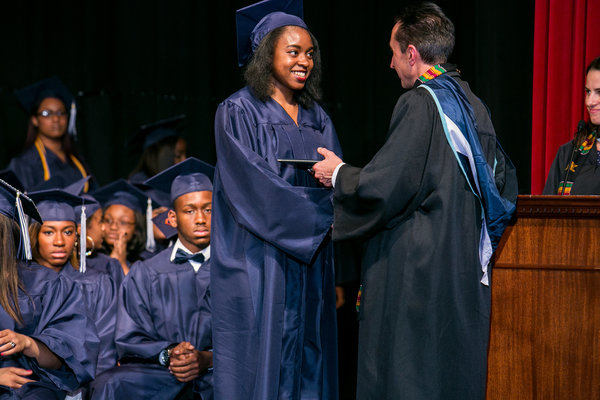
There are multiple layers to how Uncommon approaches readying students for college success. The biggest players: boosting grade point averages, raising SAT scores, and ramping up the STEM curriculum.
One of the most intriguing pieces of the strategy: GPA. GPA, at least compared to ACT, SAT, or Advanced Placement scores, tends to be lightly regarded, as the overarching perception of GPA is that it depends on the varying degrees of rigor across schools and the cocktail of courses students select.
At North Star, GPA is taken very seriously. Uncommon leaders found a strikingly strong correlation between students’ high school GPAs and their likelihood to graduate from college: Students who graduate Uncommon high schools with at least a 3.0 GPA are four times as likely to earn a bachelor’s degree, Bambrick-Santoyo said.
And that finding “really supports the ‘grit’ work,” he added, noting that if students can be taught the habits and work ethic to earn an excellent GPA, that tenacity carries over into college success.
At North Star Academy, the task of boosting GPA — dubbed “Target 3.0,” now in its second year — fell on the shoulders of Michael Mann, the head of school who launched the project amid great uncertainty. “I didn’t know why GPAs were low, and I didn’t know how to fix it,” Mann said.
To learn how to boost GPAs, Mann organized what essentially amounts to a weekly group intervention by gathering every student with a GPA below 2.5.
Using what he learned from those students, Mann developed a tool that allowed students to analyze their grades, with Mann’s oversight, and then create an action plan for themselves to improve their grades. The plan included strategies for what Mann calls “self advocacy.” His advice: Go to the teachers in whose classes your grades are low and say exactly this: “I’m really concerned about my grades,” and ask the teacher specifically what is required to fix them.
That wording amounts to “polite persistence,” Mann said. “The teachers are immediately on their side.”
Through months of trial and error, Mann learned to narrow his focus to a few pinch points. The most obvious: homework.
“These were students who weren’t getting enough parental support for homework, or who just didn’t want to do it,” Mann said. “They weren’t mature enough to realize that it was destroying their future right in front of us.”
Homework was an easy fix. But where Target 3.0 gets interesting is how Mann isolated the tricky culprit for students who had high homework marks but low GPAs: missed assignments.
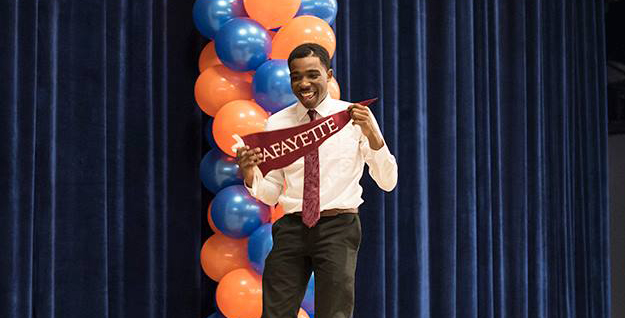
Being that most North Star students — and charter students in general — come from minority, low-income families, they tend to have familial responsibilities that go beyond what are expected of their more affluent counterparts. While missed assignments can result from simply being out sick, they can also stem from days out of school dealing with more serious and uncontrollable issues — such as the North Star student who missed many days to take care of her quadriplegic brother who was shot in the spine.
On the surface, these students had decent homework grades for the assignments they turned in and did well on in-class tests. But suddenly, at the end of the course, their GPAs plunged. Because that’s when the teachers hit the calculate button on their computers and all the zeros from missed assignments caused students’ overall grades to plummet.
“It took me almost a year to figure out what was happening,” Mann said. “But that turned out to be a third of the reason why students had GPAs below 2.5.”
Part of the solution, he said, was to instruct teachers to immediately enter zeros for missed assignments, so students were aware of how those missed assignments affected their overall grades, and could try to make up for it while the semester was still in session. Step two, Mann said, was the “polite persistence” strategy he insisted students follow: Go to the teachers and settle the missed assignments.
In just one semester, 40 percent of the students in Mann’s group raised their GPAs above 2.5. “That was a surprise to me.”
GPA is just part of Uncommon’s strategy to boost the college graduation rate by tweaking (in a big way) the academic experience students have while still at North Star.
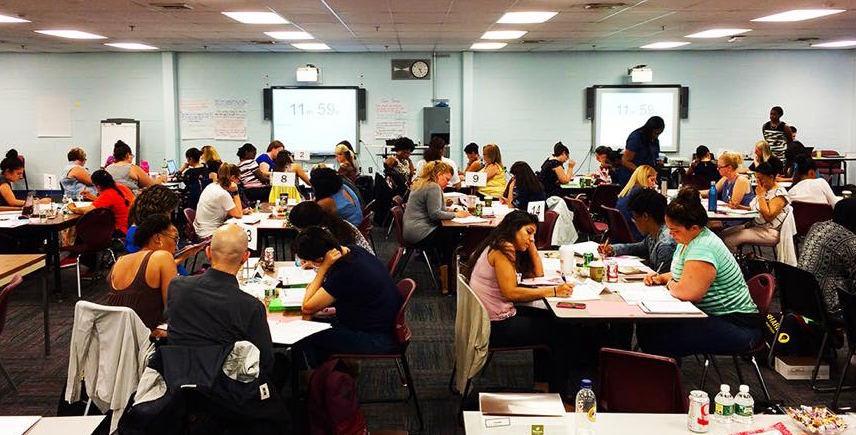
The second piece of North Star’s middle- and high-school initiative push to raise college graduation rates by tweaking the middle and high school experience is to target SAT scores. Even small boosts in the math and verbal scores make big differences in college, Bambrick-Santoyo and other leaders there concluded based on results from Uncommon alumni.
“Your GPA is the ultimate measure of grit in high school. That’s all about work ethic, about your ability to persevere,” Bambrick-Santoyo said. “But while we may fight it, the SAT is a very objective measure of college readiness. English and math are the foundations.”
In 2005, the average combined math and verbal score for North Star seniors was 932 out of a perfect 1600. Starting in 2012 and going forward, the average scores have never dropped below 1,000.
“Those 70 points are more than marginal,” Bambrick-Santoyo said. “Our students have been dramatically more successful at handling college work when they’ve gotten above that bar.”
Especially important, he said, was the SAT verbal score. “If you can’t read at [a] level to get a 500 [out of 800] on the SAT, you can’t handle college-level reading work, especially scientific articles.”
One of the major issues North Star teachers identified was that instead of thinking critically for themselves, many students would just listen and use the analyses of the one or two students who spoke up during class.
As a result, all the students were able to write decent papers — but without ever truly understanding the meaning of what they were writing. They were getting free rides off those couple of students, a ride not available to them on tests or independent reading exercises.
That discovery led to an instructional change: After students finished a new reading, they wrote their own analyses first and discussed it in class later.
The next big fix: the sciences.
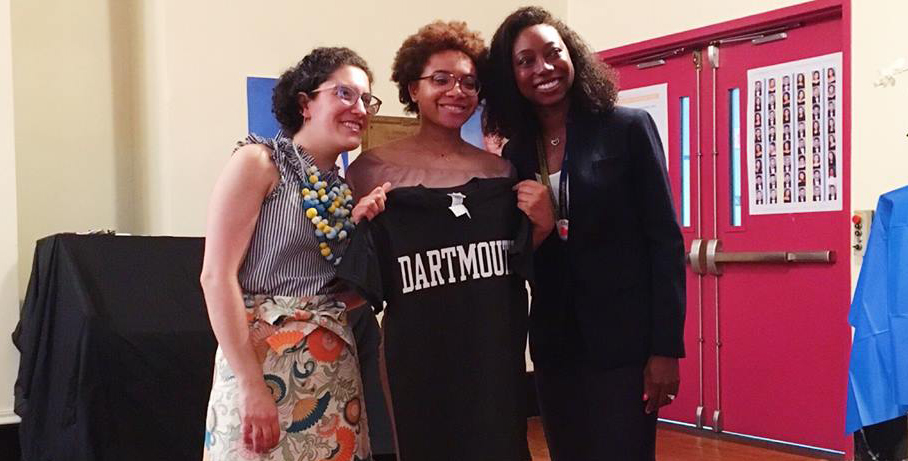
The third finding from Uncommon’s research into its graduates: Almost none of them majored in the sciences.
“We were having single-digit percentages of our students stay in the STEM fields,” Bambrick-Santoyo said. (See Emilio Pack’s STEM essay in this series about preparing students for the 21st-century economy.) “They might have taken a class at the beginning of college, but they were dropping out like flies. The dirty little secret is that we were sort of creating a pathway to humanities in college, but not to anything else.”
Science labs at Uncommon had been too “hold [students] by the hand,” which led to major shock when students entered a college lab, Bambrick-Santoyo said. “Their reaction was, ‘Do you mean I’m on my own in a lab for seven hours and I have to produce a report the next day?’”
To ramp up rigor, Uncommon sought partnerships with colleges and found a common interest: Partnering with North Star gave the universities an opportunity to demonstrate what federal grants demand: a “broader impact” on the local community. Soon, science professors started appearing on the North Star campus to present and discuss their work. As a result, Uncommon students found opportunities to work in college science labs.
Soon after, the number of North Star students entering college with a declared interest in the sciences rose to 33 percent between 2013 and 2015 from a mere 6 percent between 2004 and 2010.
It’s impossible to predict whether those students will persist through the sciences going forward, but the sampling to date has been positive, Bambrick-Santoyo said.
“A lab is no longer a foreign place,” he pointed out. “The idea of doing scientific research is no longer daunting and new.”
Get stories like these delivered straight to your inbox. Sign up for The 74 Newsletter

;)
